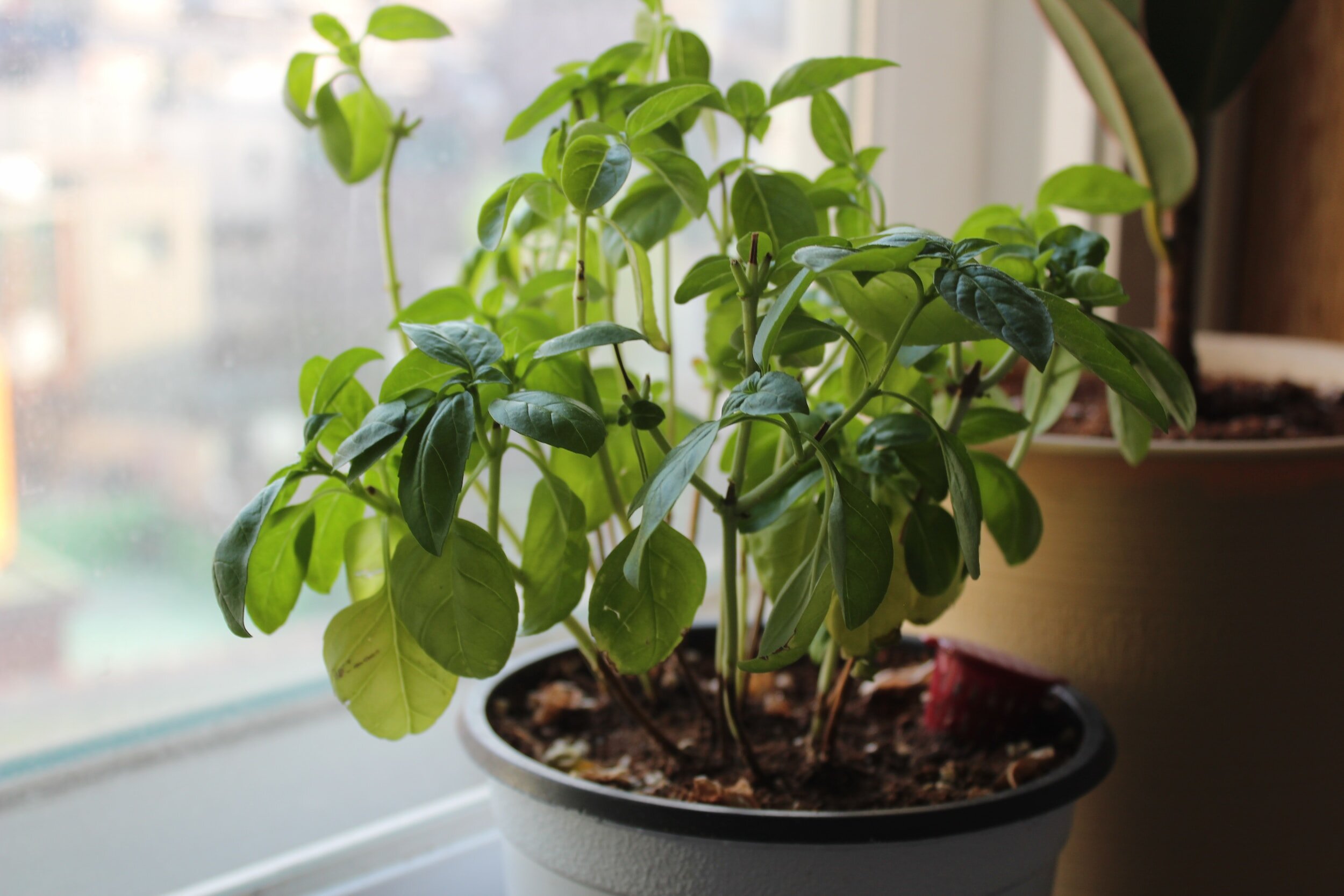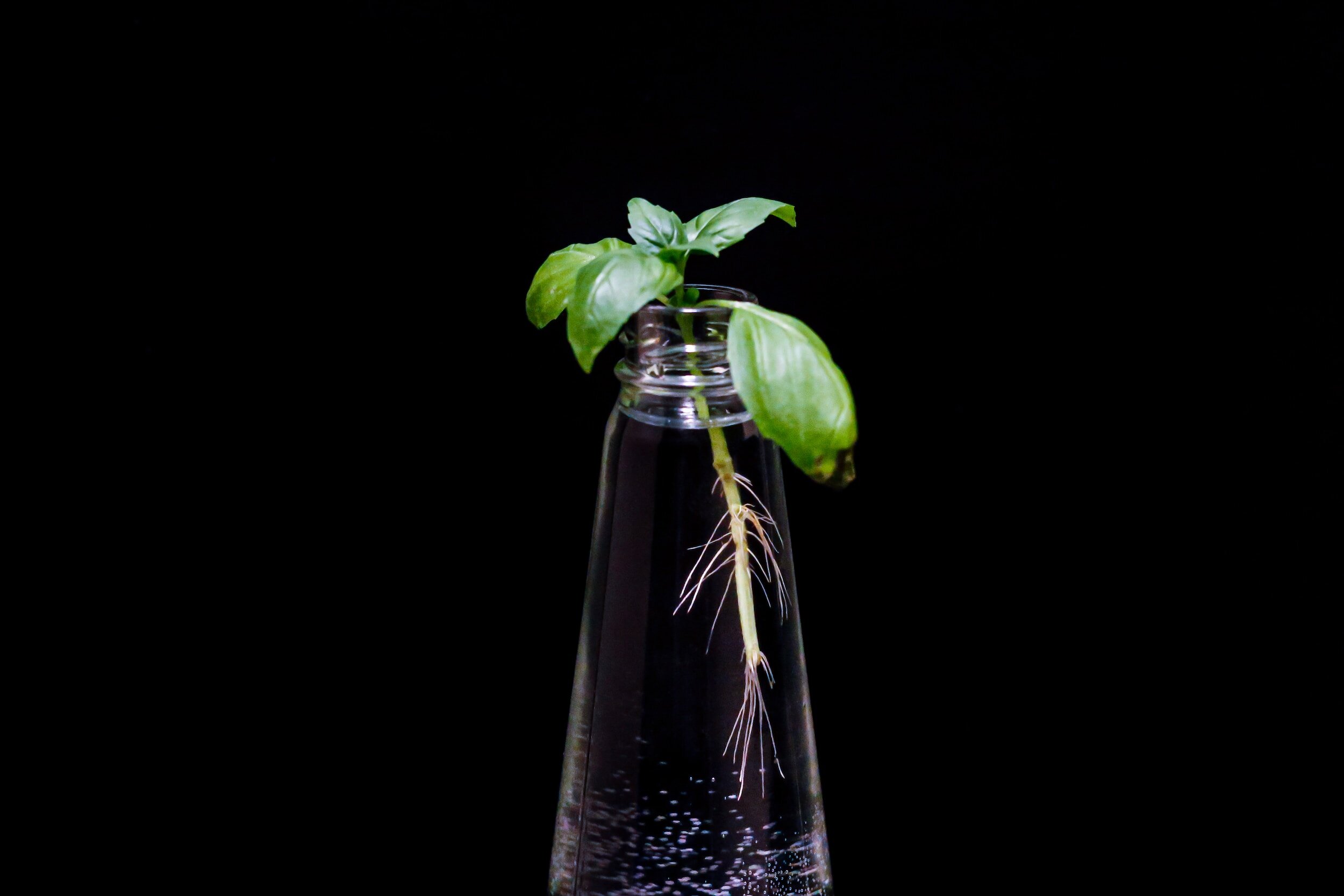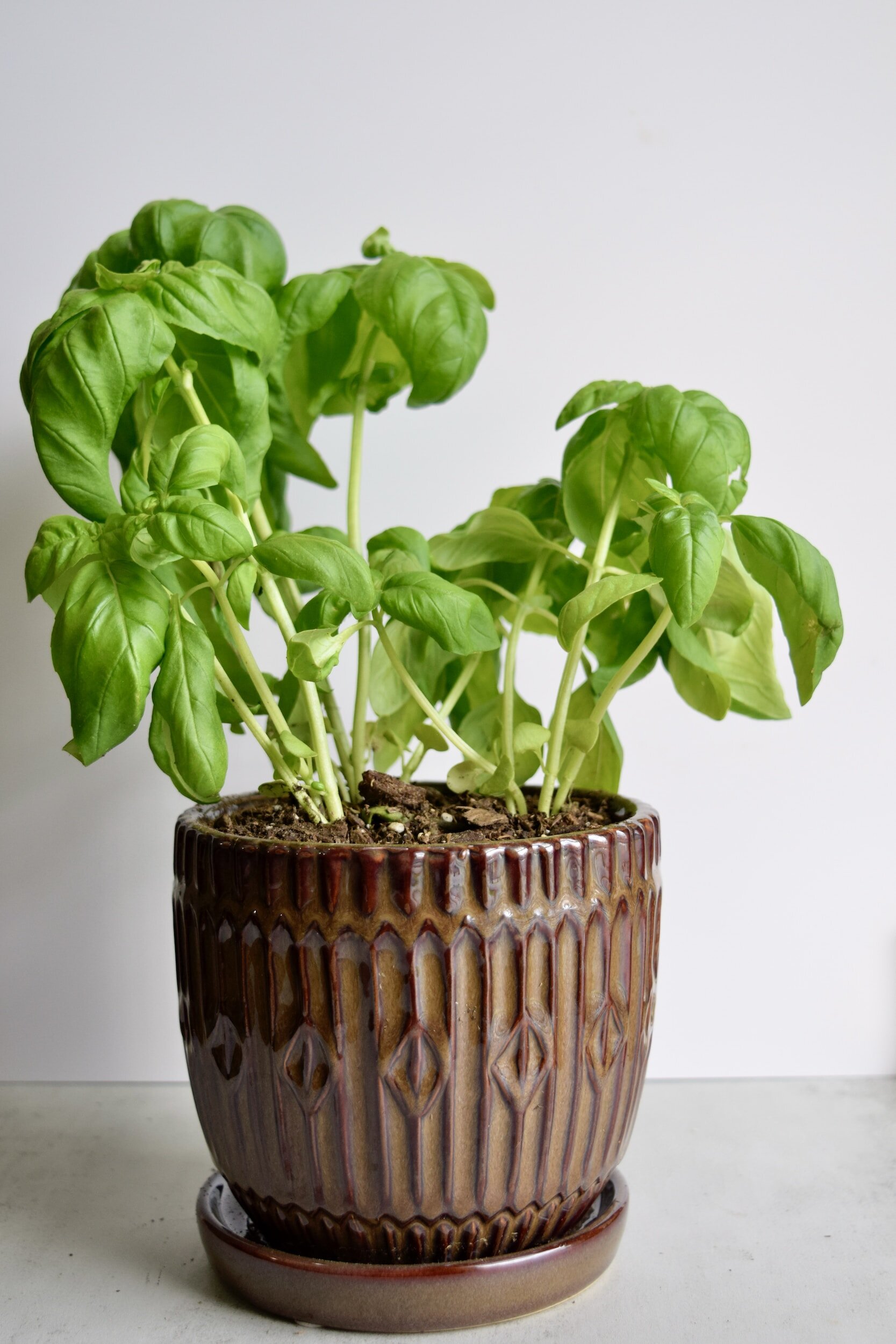How to Propagate Basil Like a Pro
This article has links to products that I may make commission from.
The fragrant basil plant has long been a staple in gardens and kitchens around the world. Its aromatic leaves have flavored countless dishes, from fresh salads to hearty pastas. But beyond its culinary prowess, basil holds another secret: it's delightfully simple to propagate.
This means that with just a bit of effort, you can turn one basil plant into many, ensuring a steady supply of fresh leaves right at your fingertips.
Many might assume that growing plants involves a lot of complexities or advanced gardening skills. However, basil's adaptability and resilience make it an ideal choice for both beginners taking their first steps into the world of gardening and seasoned gardeners looking to expand their herb collection.
This article will unveil the art and science behind basil propagation, detailing how anyone can achieve success with the right knowledge and a touch of patience.
Diving into the process, we'll explore the different methods of propagation, the anatomy of the basil plant, and the many benefits that come with cultivating your own basil garden.
Whether you're hoping to save money, have a continuous supply of this culinary gem, or simply find joy in watching something grow, understanding the ins and outs of basil propagation can open up a world of possibilities.
To learn more about growing basil, check out my guides The Best Basil Companion Plants and How to Harvest Basil Seeds the Right Way.
Step-by-Step Guide to Propagating Basil
1. Selection Criteria for Basil Stem Cuttings:
It's crucial to start with a robust foundation. Healthy parent plants yield the best cuttings. Choose basil stems that are vibrant green, vigorous, and free from any diseases or pests.
Avoid stems that have already flowered, as they might not root as effectively.
2. Where to Cut Basil for Propagation:
The cutting location plays a pivotal role. Use sharp, sterilized scissors or pruning shears and make a cut just below a node (the little bumps where leaves sprout) because nodes are rich in cells that facilitate rooting.
Ideally, your cutting should be around 4 to 6 inches long.
Here are my favorite pruning scissors for the job:
3. Preparing the Basil Cuttings:
Once you've taken a cutting, it's essential to prep it correctly. Gently remove the leaves from the lower half, leaving several leaves at the top intact.
This not only reduces moisture loss but also directs the plant's energy towards root development at the node points.
4. Rooting Methods:
Water Rooting:
This method is straightforward and allows you to witness the magic of root growth visually.
Place the basil cutting in a clear container filled with water, ensuring the nodes where you removed leaves are submerged, but the remaining leaves are not.
Opt for a spot with indirect sunlight. Change the water every few days to keep it fresh and oxygenated.
Within a week or two, you should see delicate white roots starting to form.
Soil Rooting:
Some gardeners prefer rooting directly in soil, asserting it creates hardier plants.
While some gardeners might suggest using a rooting hormone, basil typically roots well without it. However, if you choose to use one, follow the product instructions carefully.
Plant the stem cuttings in a pot filled with well-draining potting mix. Water it lightly and place the pot in a location with indirect sunlight.
Covering the pot with a clear plastic bag can create a greenhouse effect, maintaining humidity, which can be beneficial for rooting.
5. Monitoring and Troubleshooting:
Basil Cuttings Not Rooting: Patience is key. However, if it's been a few weeks with no signs of rooting, consider factors like water quality (chlorinated water can hinder root growth), or excessive direct sunlight which can stress the cutting.
Basil Cuttings Wilting: This can be a sign of underwatering, overwatering, or excessive light. Ensure the water level is adequate and the placement is in indirect light.
6. Transplanting Basil:
From Water to Soil:
Once the roots in your water-propagated basil are a couple of inches long, they're ready for transplanting to soil. Dig a small hole in the potting mix, place the rooted cutting in, and gently cover the roots with soil. Water lightly.
Strengthening Soil-Rooted Plants:
If you started in soil, once your basil plant establishes a robust root system and begins showing new growth, consider transplanting it to a larger pot or directly in your garden if the climate allows.
Want to learn more about propagation? Check out my guides:
Want to try growing basil from seed? Here are my recommended basil seeds:
Basil 101
Origin and History:
Basil, scientifically known as Ocimum basilicum, originates from tropical regions in Central Africa to Southeast Asia.
It's a herb with deep historical and cultural roots, revered not just for its culinary use but also for its significance in various traditions and medicinal practices.
Growth Habit and Lifecycle:
Basil is an annual herb, which means it completes its entire lifecycle—from seed to flower to seed again—in just one year.
Check out my guide: How to Harvest Basil Seeds the Right Way.
However, in tropical climates, it might sometimes act as a perennial, living for more than a year. Its growth habit is bushy, often reaching a height of 12 to 24 inches depending on the variety.
Basil Roots:
The roots of a basil plant are fibrous and relatively shallow. While they anchor the plant firmly into the soil, they also play a vital role in water and nutrient absorption.
A healthy root system is a good indicator of a thriving plant, as it ensures the plant gets all the nutrients it needs for growth.
Basil Stems and Leaves:
The stem of the basil plant is square-shaped, a characteristic feature of the mint family to which basil belongs. As the plant grows, the stems branch out, giving rise to the bushy appearance.
The leaves, on the other hand, vary in shape and size across different basil varieties but are generally oval and have a smooth texture. These leaves are the primary sites for photosynthesis, a process where the plant converts light into energy.
Flowers and Seeds:
Basil plants produce small flower spikes above the foliage, typically in late summer. These flowers can range from white to purplish in hue and, once pollinated, produce seeds.
While the flowers are a sign of a healthy plant, many gardeners pinch them off to encourage the plant to put more energy into leaf production, which is usually the main interest for those growing basil for culinary purposes.
Read more about basil flowers and the The 10 Best Flowering Herbs here.
Varieties of Basil:
While many of us are familiar with the sweet basil used in Italian cuisines, there are numerous other basil varieties, each with its unique aroma, flavor, and appearance.
For instance, Thai basil has a spicier note, while purple basil brings a vibrant hue to the garden.
Pest and Diseases:
Understanding basil also means being aware of its vulnerabilities. Basil can be prone to pests like aphids, whiteflies, and Japanese beetles.
Additionally, diseases such as fusarium wilt and downy mildew can affect it. Being proactive in checking for signs of these issues can ensure your basil plants remain healthy.
To learn more about starting an herb garden, check out my guide: Growing Herbs in Water: A Simple Guide.
Frequently Asked Questions
Can you grow basil from cuttings bought at the grocery store?
Absolutely! Often, fresh basil stems sold in grocery stores can be propagated, provided they're still fresh and vibrant.
Make sure the stems aren't wilting and are free from any diseases or pests. Follow the same propagation steps mentioned earlier.
How long does it take for basil cuttings to root in water?
Typically, basil cuttings start showing root growth within a week or two when placed in water.
However, various factors like water quality, sunlight, and the overall health of the cutting can influence this timeline.
Can I grow basil in water indefinitely?
While basil cuttings can root and survive in water for an extended period, for long-term growth and health, it's advisable to transplant them into soil.
Soil provides essential nutrients that water alone can't offer, ensuring the plant thrives and produces robust foliage.
Does basil spread like mint in a garden?
While both basil and mint belong to the same family (Lamiaceae), their growth habits differ. Mint spreads through aggressive underground rhizomes, making it invasive in gardens.
In contrast, basil grows upright and bushy and doesn't spread invasively like mint. However, if basil seeds, it can pop up in different spots the following year.
Check out my guide: How to Harvest Basil Seeds the Right Way.
How often should I water my rooted basil cuttings in soil?
Basil prefers evenly moist soil but dislikes waterlogged conditions. Initially, after transplanting, water lightly but frequently to support root establishment.
Once established, let the top inch of soil dry out between waterings.
My basil plant has flowered. Is it still good for propagation?
While you can propagate from flowering basil stems, it's usually better to choose non-flowering stems. Flowering indicates the plant is focusing on reproduction rather than vegetative growth.
Non-flowering stems tend to root faster and more efficiently.
How do I know if my basil plant is receiving the right amount of light?
Basil thrives in ample sunlight. In ideal conditions, it prefers 6-8 hours of sunlight daily. If your basil plant becomes leggy, with long stems and sparse leaves, it might not be getting enough light.
Conversely, if the leaves look scorched or faded, it might be getting too much direct sunlight. Adjust its location accordingly.
Why Propagate Basil?
1. Economical Benefits:
Growing plants from scratch, especially herbs like basil, can often involve costs that accumulate over time. Buying mature basil plants or fresh basil leaves from a grocery store or nursery isn't just a one-time expense.
As you use the herb in your recipes, you'll find yourself needing to replenish your supply frequently. By learning to propagate basil, you're making a one-time investment in a plant or a cutting, which can then multiply to give you numerous plants.
Over time, this self-sufficiency can result in substantial savings.
2. Continuous Fresh Supply:
Having your own propagated basil plants means you have an ongoing source of fresh basil leaves. This is particularly beneficial for those who love to cook and want their ingredients as fresh as possible.
When basil is freshly harvested, its aromatic oils are at their peak, imparting maximum flavor to dishes. Plus, there's an unbeatable satisfaction in knowing that the garnish on your plate came from your own garden.
3. Environmental Benefits:
Propagating your own plants reduces the need for commercially grown herbs that might employ extensive farming practices, which can sometimes be unsustainable or harmful to the environment.
By propagating and cultivating your own basil, you're reducing the carbon footprint associated with transporting herbs from far-off places to your local grocery store.
4. A Rewarding Hobby:
Gardening, and specifically plant propagation, is more than just a functional activity—it's a therapeutic and rewarding hobby. Nurturing a basil cutting and watching it grow into a flourishing plant can offer immense satisfaction.
For many, it's a way to connect with nature, find peace in the midst of urban chaos, and even improve mental well-being.
5. Customization and Experimentation:
By propagating your own basil, you can experiment with different varieties that might not be readily available in stores. From sweet basil to Thai basil, there's a world of flavors and aromas to explore.
As you get more experienced, you can even try your hand at cross-breeding to create your unique basil variety.
Propagating basil isn't just an exciting foray into the world of plant propagation; it's also a sustainable and rewarding way to ensure you have a constant supply of this aromatic herb. Whether you choose to root basil cuttings in basil water or soil, the joy of watching those delicate roots emerge is unparalleled.
If you're new to the world of gardening and are intrigued by the process, seed starting might be another avenue to explore. While basil propagation is relatively straightforward, diving into gardening books can offer deeper insights and broaden your horticultural horizons. Check out my guide: The Best Gardening Books for Beginners.
From container gardening, perfect for urban dwellers with limited space, to mastering the art of rooting basil and other herbs, the gardening journey is filled with learning, growth, and green rewards. So, roll up your sleeves and let the magic of propagation begin.
Learn more about Herbs That Can Be Planted Together: The Best Combinations.



































